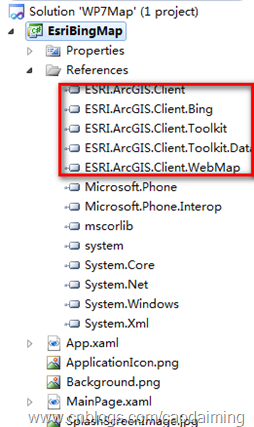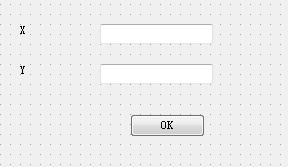Windows Phone 7 自定义弹出窗口
Windows Phone内置的MessageBox弹出窗口局限性太大,不能满足各种个性化的弹出窗口的需求,即使使用第三方的控件库也会有一些局限性,又或者封装的东西太多了,那么这时候就需要自己去根据自己的需求去自定义一个弹出窗口了。
大概的原理就是使用Popup控件来实现弹出窗的效果,Popup控件可以把包含在其中的控件显示在最外面,从而可以把当前页面的控件都给盖住了,再加点半透明的效果,若隐若现的,一个弹窗就出来了。好吧,下面来看一下Demo。
先看一下demo的结构。

Generic.xaml
<ResourceDictionary
xmlns="http://schemas.microsoft.com/winfx/2006/xaml/presentation"
xmlns:x="http://schemas.microsoft.com/winfx/2006/xaml"
xmlns:local="clr-namespace:MessageControl;assembly=MessageControl"
xmlns:d="http://schemas.microsoft.com/expression/blend/2008"
xmlns:mc="http://schemas.openxmlformats.org/markup-compatibility/2006"
mc:Ignorable="d"
>
<Style TargetType="local:MyMessage">
<Setter Property="FontFamily" Value="{StaticResource PhoneFontFamilyNormal}"/>
<Setter Property="FontSize" Value="{StaticResource PhoneFontSizeNormal}"/>
<Setter Property="Foreground" Value="{StaticResource PhoneForegroundBrush}"/>
<Setter Property="Background" Value="Snow"/>
<Setter Property="Width" Value="480" />
<Setter Property="Height" Value="800" />
<!--定义模板的Template-->
<Setter Property="Template">
<Setter.Value>
<ControlTemplate TargetType="local:MyMessage">
<Grid VerticalAlignment="Stretch">
<Rectangle x:Name="backgroundRect" Grid.Row="0" Fill="Black" Opacity="0.7"/>
<Border
VerticalAlignment="Top"
BorderThickness="3"
BorderBrush="Black">
<StackPanel Margin="0">
<ContentPresenter x:Name="body"/>
</StackPanel>
</Border>
</Grid>
</ControlTemplate>
</Setter.Value>
</Setter>
</Style>
</ResourceDictionary>
using System.Windows;
using System.Windows.Controls;
using System.Windows.Shapes;
using System.Windows.Controls.Primitives;
using Microsoft.Phone.Controls;
namespace MessageControl
{
public class MyMessage : ContentControl
{
private System.Windows.Controls.ContentPresenter body;
private System.Windows.Shapes.Rectangle backgroundRect;
private object content;
public MyMessage()
{
//这将类的styleKey设置为MyMessage,这样在模板中的style才能通过TargetType="local:MyMessage"与之相互绑定
this.DefaultStyleKey = typeof(MyMessage);
}
//重写OnApplyTemplate()方法获取模板样式的子控件
public override void OnApplyTemplate()
{
base.OnApplyTemplate();
this.body = this.GetTemplateChild("body") as ContentPresenter;
this.backgroundRect = this.GetTemplateChild("backgroundRect") as Rectangle;
InitializeMessagePrompt();
}
//使用Popup控件来制作弹窗
internal Popup ChildWindowPopup
{
get;
private set;
}
//获取当前应用程序的UI框架PhoneApplicationFrame
private static PhoneApplicationFrame RootVisual
{
get
{
return Application.Current == null ? null : Application.Current.RootVisual as PhoneApplicationFrame;
&n
补充:移动开发 , Windows Phone ,




